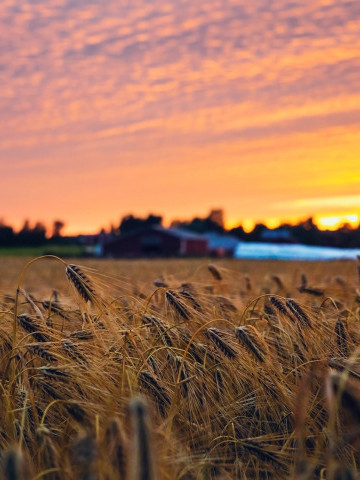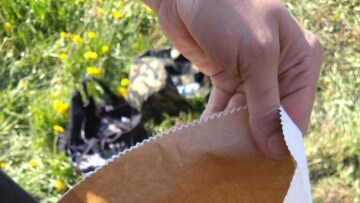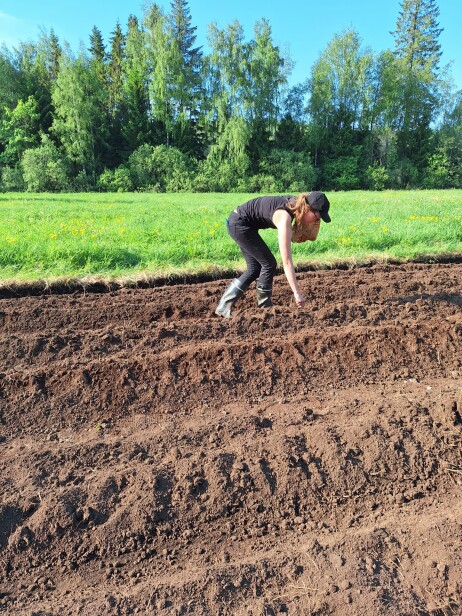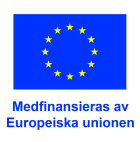
Bioekonomi
I bloggen Bioekonomi får du veta mer om Yrkeshögskolan Novias forsknings-, utvecklings- och innovationsverksamhet inom forskningsområdet systemomställning för att bygga resiliens. Majoriteten av personalen finns huvudsakligen i Raseborg. Här bildar forskare, projektarbetare, lärare, studerande och administrativ personal en dynamisk helhet. På vår blogg kan du läsa om vilka vi är, vad vi gör och om våra resultat. Välkommen!
Vid frågor eller feedback kontakta bloggens administratör Heidi Barman-Geust (Heidi.barman-geust(a)novia.fi)
Vi följer CC BY 4.0 om inget annat nämns.
Systemic Transformation to Build Resilience is one of Novia University of Applied Sciences six' research areas. The activity is mostly located in Raseborg, in southern Finland. As a dynamic unity, our researchers, project workers, teachers, students and administrative personnel produce versatile results in research, development and innovation. We blog about who we are, what we do, what our conclusions are, and how we implement them. Welcome!
If you have questions, please contact Heidi Barman (Heidi.barman-geust(a)novia.fi)
We folllow CC BY 4.0 if nothing else is stated.
New project grows nettle for food and fibre

Presentation picture: Nettle seeds are tiny! Photographer: Sonja Träskman
Stinging nettle (Urtica dioica) has been accompanying humans in Europe for thousands of years, thriving in areas with moist soil and nutrients from human and animal waste. Nettles have not only been a stinging nuisance, but a source for food, traditional medicine, fertilizer, and raw material for textiles. In the nineteenth century and the beginning of the twentieth century there has been commercial farming and textile manufacturing of nettle in Europe. In recent years, a resurgence of interest in nettle-based textiles has risen within the sustainable fashion industry.
In May 2024 Novia UAS started a nettle project called NyNässla - Nettles for fibre and food in Uusimaa, in collaboration with Västankvarn research farm. NyNässla means new nettle in Swedish. “Ny” also refers to Nyland, the Swedish name of the Uusimaa region where the project is active. During the project period 2024-2026, nettle is grown for three years on a land lot of 0,2 ha at the trial farm in Inkoo. Half of the area was sown at the end of May 2024, and the other half waits for autumn sowing.
Farming methods to get both fibres from the stalk and leaf biomass from the same harvest are tried out. The project aims to localize and bring production of raw materials closer to potential users, to create an interest in nettle farming, and to build networks and potential product development, together with processers of fibres and nettle leaves. NyNässla project combines previous nettle field studies from Finland and continental Europe. The project tests agronomic management steps and tries to test and create new information on farming practices so that as many new farmers as possible could take nettle into their own production systems, if possible.
Nettle is a perennial crop that can be produced in different conditions in both organic and conventional systems. It can be grown on land unsuitable for other crops, at a relatively low cost, using the most basic farm equipment. It thrives in cooler climates, which makes it a good candidate for regional production of textile fibres in the Nordic countries. Textiles made from nettle feel lustrous and smooth, even if the plant itself can feel harsh. The fibres not used for textiles, could be turned into strong paper or composites.
Nutritious nettle leaf biomass can be used as food, similarly to spinach, or added to animal feed as a nutritional component. Positive test results exist already from use with poultry, pigs and horses. Another important aspect is to find use for side streams the production results in. For example, water used for retting the nettle stalks to ease the separation of the fibres, could have potential to be used as a fertilizer for other crops. Also, the shives – the woody part of the stem the fibre is being separated from – can be utilized in general as any other cellulosic woody materials. In addition to the stem and the leaves, seeds and roots can also be used for various products. Current commercial nettle farms tend to produce either food or fibre, however producing both is possible. Utilizing both potential outputs could improve profitability of the nettle production and encourage farmers to adopt nettle and thus diversify their current production.
Nettle could provide economic activity to farm plots currently too small or otherwise unsuitable for larger scale activity. Nettle could also provide leafy green food source whilst offering a non-food textile grade fibre source from same harvests. Many smaller companies located in Southern Finland could ideally fairly easily adopt nettle into their existing product categories, diversifying both products as well as farming offering.
The project is coordinated by Project Leader Ulrika Dahlberg and Project Expert Samica Sadik, who is a PhD researcher at University of Helsinki, studying nettle fibre use and features in textiles use. If you are interested in learning more about the project or have ideas about processing the harvested biomass, please do not hesitate to be in contact!
Project Leader Ulrika Dalberg, ulrika.dahlberg@novia.fi
Project Expert Samica Sadik, samica.sadik@novia.fi
Project funding has been granted from the European Union, via the Uusimaa Centre for Economic Development, Transport and the Environment (ELY Centre).
 Samica Sadik sowing nettle by hand. Photographer: Ulrika Dahlberg
Samica Sadik sowing nettle by hand. Photographer: Ulrika Dahlberg
 Ulrika Dahlberg ready to make rows for nettle seeds. Photographer: Samica Sadik
Ulrika Dahlberg ready to make rows for nettle seeds. Photographer: Samica Sadik


Texten har granskats av Novias campusredaktion och publicerats 13.6.2024
![]()
Bioekonomi
Blogginlägg som är granskat av Novias redaktionsråd är utmärkta med nyckelordet "Granskat inlägg".
Vi följer CC-BY 4.0 om inget annat nämns.
Ansvarsfriskrivning: Författaren/författarna ansvarar för för fakta, möjlig utebliven information och innehållets korrekthet i bloggen. Texterna har genomgått en granskning, men de åsikter som uttrycks är författarens egna och återspeglar inte nödvändigtvis Yrkeshögskolan Novias ståndpunkter.
Disclaimer: The author(s) are responsible for the facts, any possible omissions, and the accuracy of the content in the blog.The texts have undergone a review, however, the opinions expressed are those of the author and do not necessarily reflect the views of Novia University of Applied Sciences.